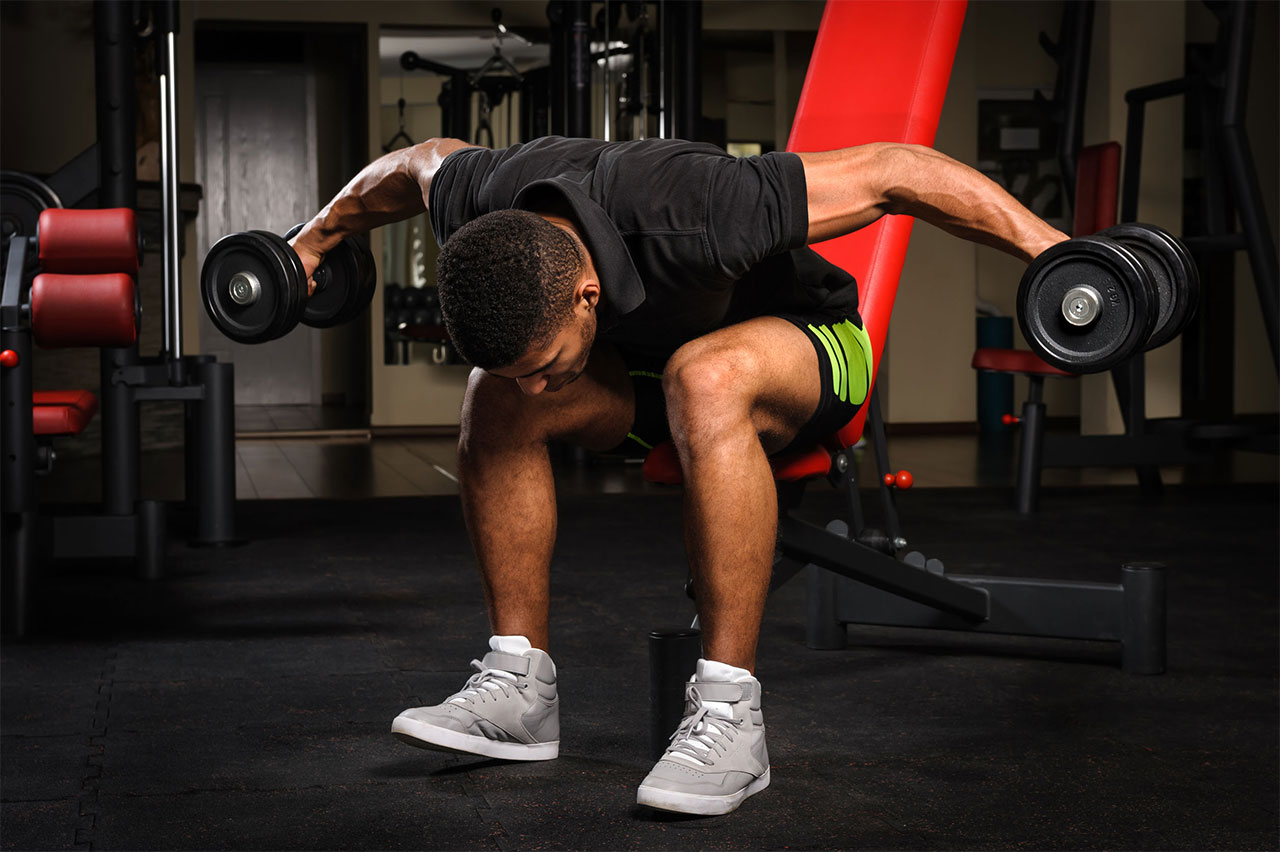Often times, trainees and fitness enthusiasts get caught up with injuries, due to poor exercise choice and execution. Overhead pressing movements are the most common cause of shoulder joint injuries, as these movements allow us to go heavier, using the shoulders and its synergists- The triceps and upper portion of the chest.
Such heavy lifts however, place excessive tension on the shoulder joint, often leading to unpleasant experiences for many beginners and advanced athletes. Especially for taller individuals who have longer arms and therefore a bigger range of motion.
In this article, we are going to show you a no-overhead press shoulder workout, which will target the deltoids all-around and will compensate for the inability to do overhead presses, due to an injury.
Warm up
A mandatory warm-up of 15 minutes is required, as before every workout.
To further prepare the shoulders however, use the following 3 shoulder stretches
Standing reverse shoulder stretch
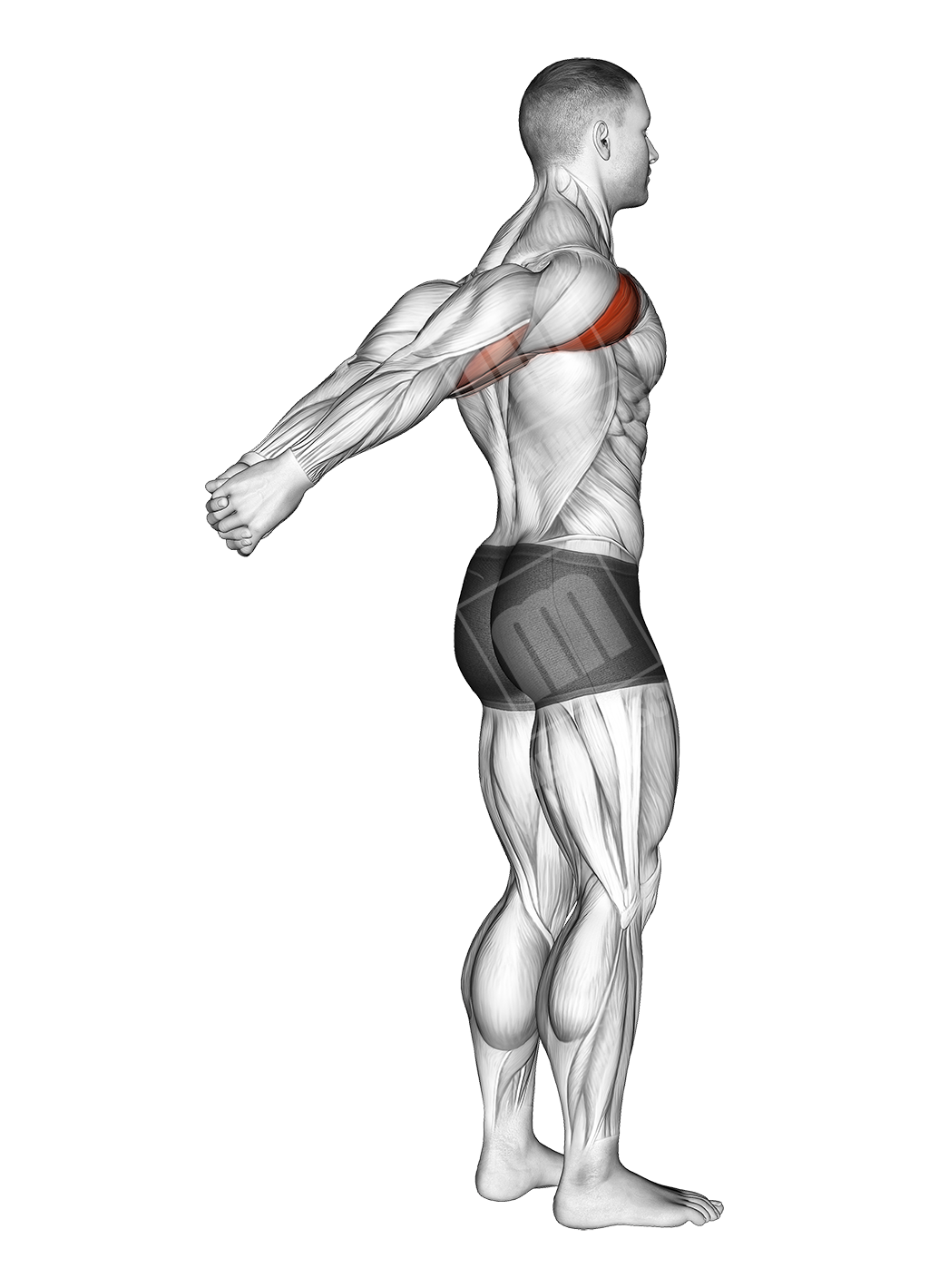
Execution
- Stand up straight and grab your hands behind your back
- Keep arms straight and extend your arms back
- Feel the stretch and hold it for a couple of seconds
- Release, repeat
Standing upright shoulder stretch
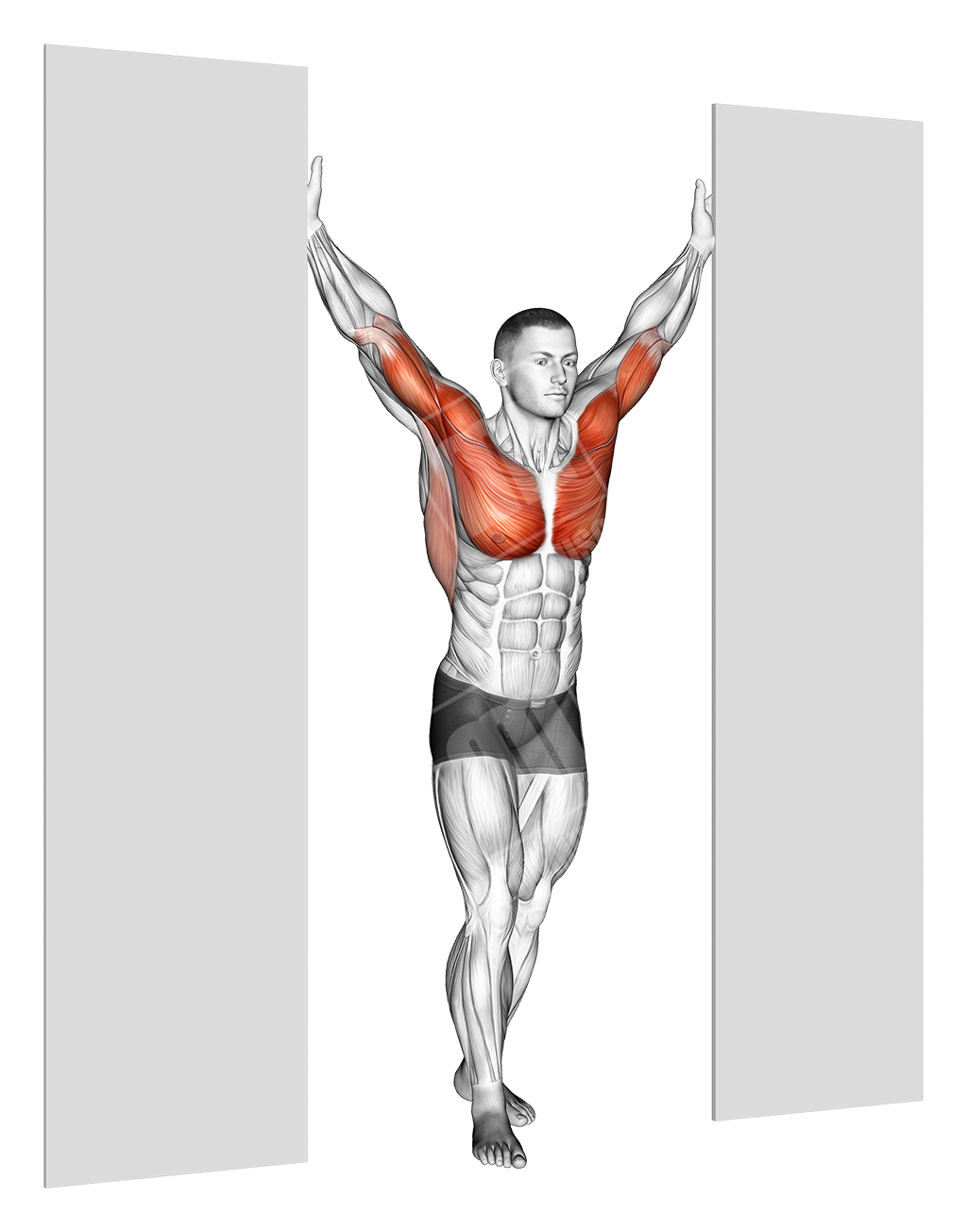
Execution
- Stand between a door case, or on a place where you can place your arms high
- Keep body straight and lift your arms up, placing them on the door case/wall
- Lightly push and feel the stretch in your shoulders
- Hold the static position for some time then release
Band shoulder stretch
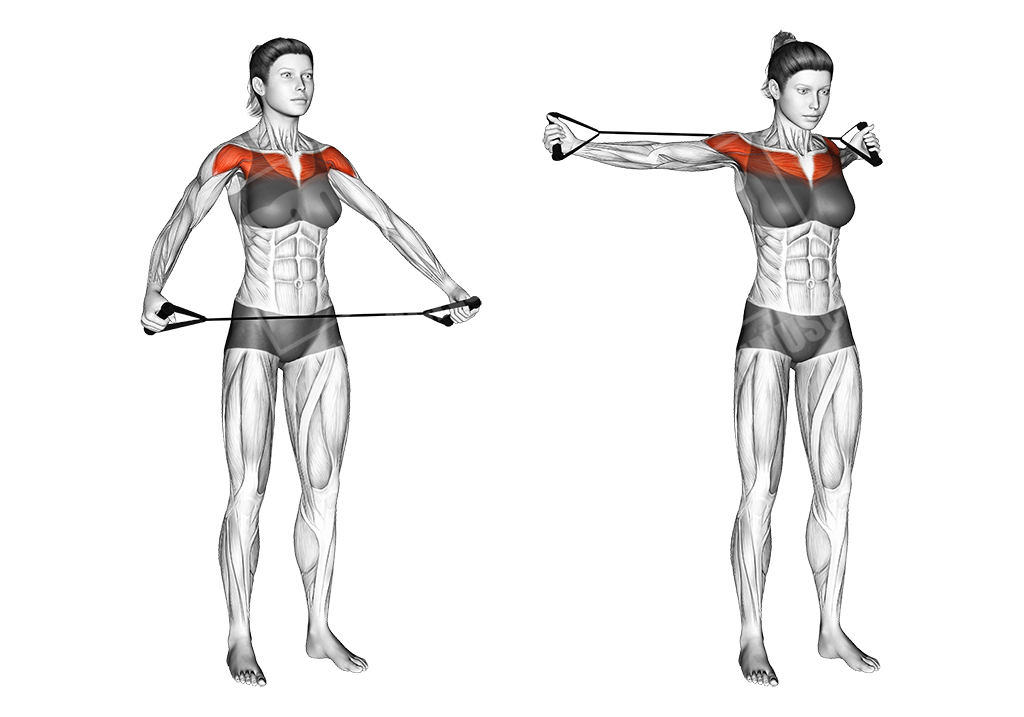
Execution
- Grab a band by both ends and keep it at the lower portion of your abdomen, with arms completely straight
- Raise it up and above your head, then behind it
- Do it within your comfort zone- if you feel excessive tension/pain, cut it short
- Return the band to its initial position at lower abdomen level
After doing these shoulder mobility exercises/stretches for a good 5-10 minutes, continue with the rest of the warm up for the whole body.
After you are completely done with your 15-20-minute pre-workout warm up, proceed to the workout below.
The workout
| Exercise | Sets | Repetitions |
|---|---|---|
| Dumbbell front raise | 5 | 15,12,10,10,10 |
| Cable lateral raise | 3 | 10 |
| Weighted front raise | 3 | 10 |
| Dumbbell lateral raise | 3 | 12 |
| Rear delt dumbbell flys | 4 | 12 |
Exercise map
Dumbbell front raise

Execution
- Stand with feet at shoulder width and back straight
- Hold the dumbbells in front of your thighs
- Raise both dumbbells simultaneously
- Hold contraction briefly once the arms are parallel to the ground
- Let the dumbbells down slowly, keeping constant tension on the delts
Cable one arm lateral raise
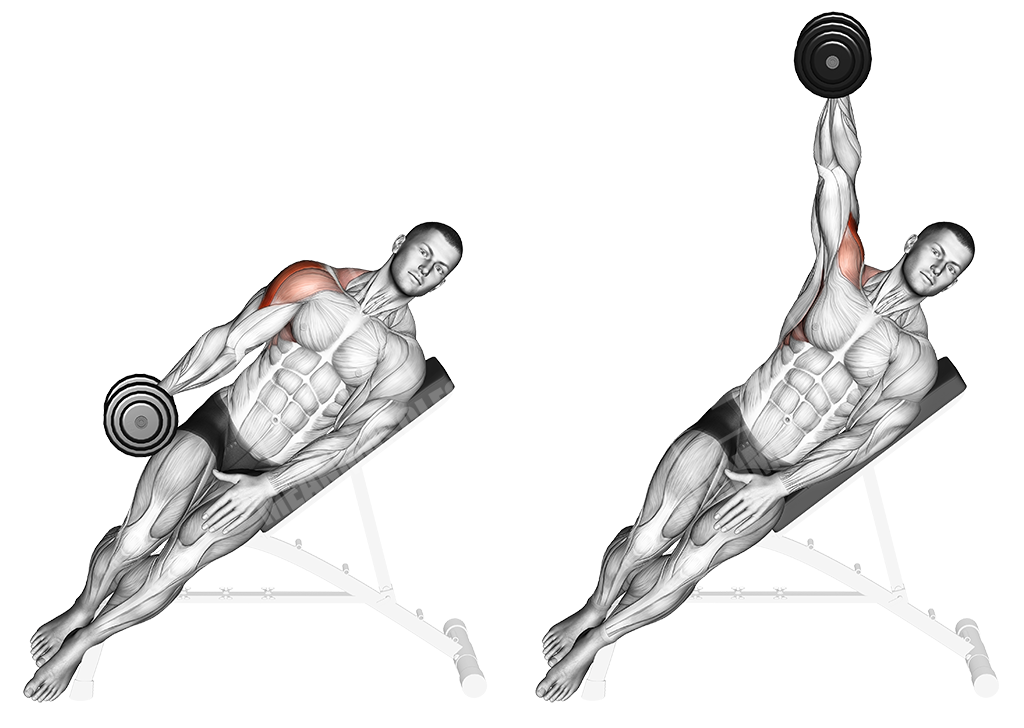
Execution
- Stand next to the pulley machine
- Grab the lower pulley with the outer arm
- Place the opposite arm on your hips
- Pull the cable laterally
- Hold contraction briefly then return to original position slowly
- Proceed to the opposite arm after the set is finished
Weighted front raise
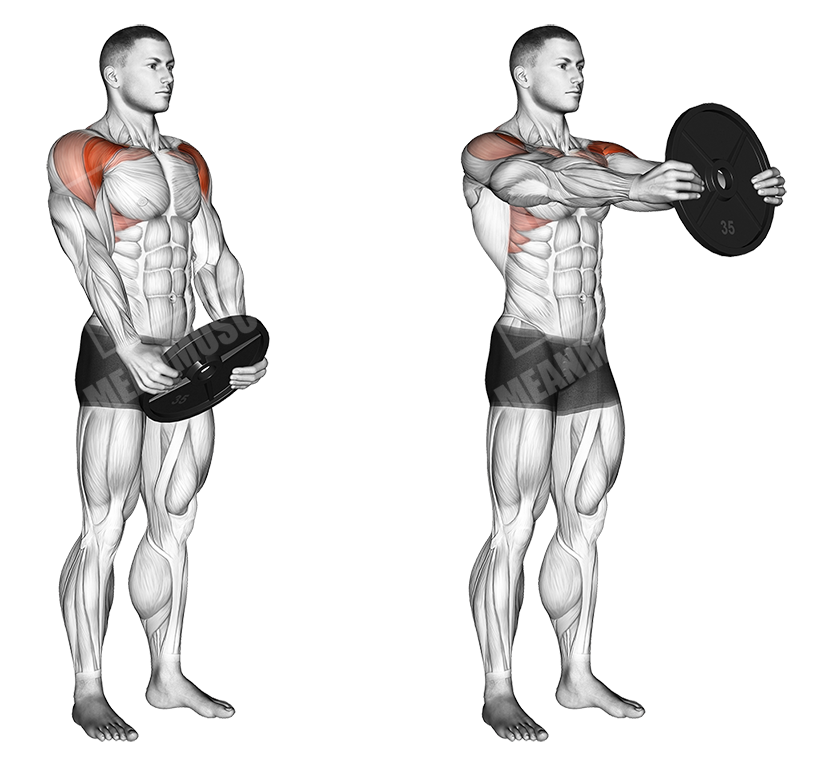
Execution
- Stand up with feet at shoulder width
- Keep back straight to maintain a balanced position
- Hold the disk with both hands on the sides
- Look forward and raise the disk with a moderate pace, reaching and briefly holding the full contraction of the deltoids
- Let the weight down slowly, maintaining constant tension on the shoulders
Dumbbell lateral raise

Execution
- Stand up stably and keep the dumbbells by your sides
- Look forward, keep elbows in a slightly bent, static position
- Raise the dumbbells laterally, reaching full contraction
- Hold the contraction for a split second and let the dumbbells down slowly
Rear delt dumbbell flys

Execution
- Sit on the edge of the bench
- Place dumbbells below your legs
- Grab the dumbbells and bend elbows slightly
- Lie down on your legs
- Move the dumbbells up slowly, contracting the rear delts (note- The back of your palm is facing FORWARD, so that the sides of the dumbbells are facing up)
- Hold contraction briefly up top and let the dumbbells down slowly, maintaining constant tension on the rear delts
Conclusion
Overall, if you have a shoulder injury which doesn’t allow you to do overhead pushing movements, you should consider going easy on all pushing exercises. To get the best workout possible with such an injury, don’t tunnel vision weight used, but rather focus on a well-paced, proper movement.
Make sure the muscles are working throughout the whole set and are getting as much tension as possible, with no excessive such. This will ultimately allow you to not only increase the size of your shoulders, even though you are injured, but also make them crispy and developed into deep, striated detail.
Every injury however, can be healed. If you don’t have chronic shoulder pains and manage to recover from your injury, do check out our other shoulder workouts that include overhead movements, as well as the ones here.
If you need an individual approach, do not hesitate to contact our team- We are always out here for you!

